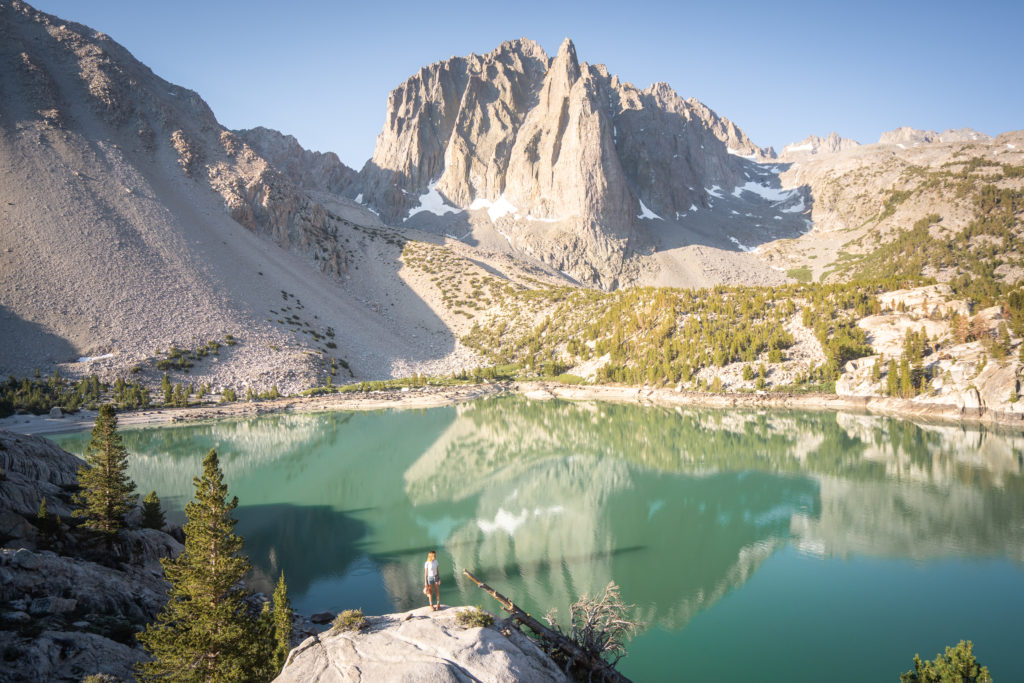
Second Lake: Gem Of The Sierra
I remember the first time I saw a photo of Second Lake. Sparkling glacier blue water framed by a crown of mountain peaks piercing into the equally blue sky above it. I didn’t know the name of the lake, or exactly where it was at the time, but I knew I had to go!
I would later find out that the lake that had captivated my imagination was known as Second Lake. A little further research revealed that The Big Pine Creek North Fork Hiking Trail is home to some of the most stunning alpine scenery in the Eastern Sierras. To be honest, I feel pretty comfortable expanding that claim to include the entire United States. As it turns out, Second Lake is only one of seven lakes that call the basin below Palisade Glacier home. This string of picturesque lakes is known cumulatively as the Big Pine Lakes. Individually, they are known by the numerical order in which they appear. A somewhat uncreative yet exceedingly practical naming solution.
The only thing left to do was hike it! Of course, that proved to be the most challenging part. Years passed, and somehow I never found myself in the Sierras at the right time. Then, a couple of weeks ago, after years of daydreaming, a series of unfortunate events conspired to trap Quin, and me smack dab in the middle of the Eastern Sierras during an unseasonably early heatwave.
And just like that, the Big Pine Creek North Fork Trail was back on my radar.
So at 3:30 am, after a sleepless night in the scorching hot van, Quin and I decided to head up the Big Pine Creek North Fork trail to see if we could beat the heat. Needless to say, it lived up to all my wildest expectations!
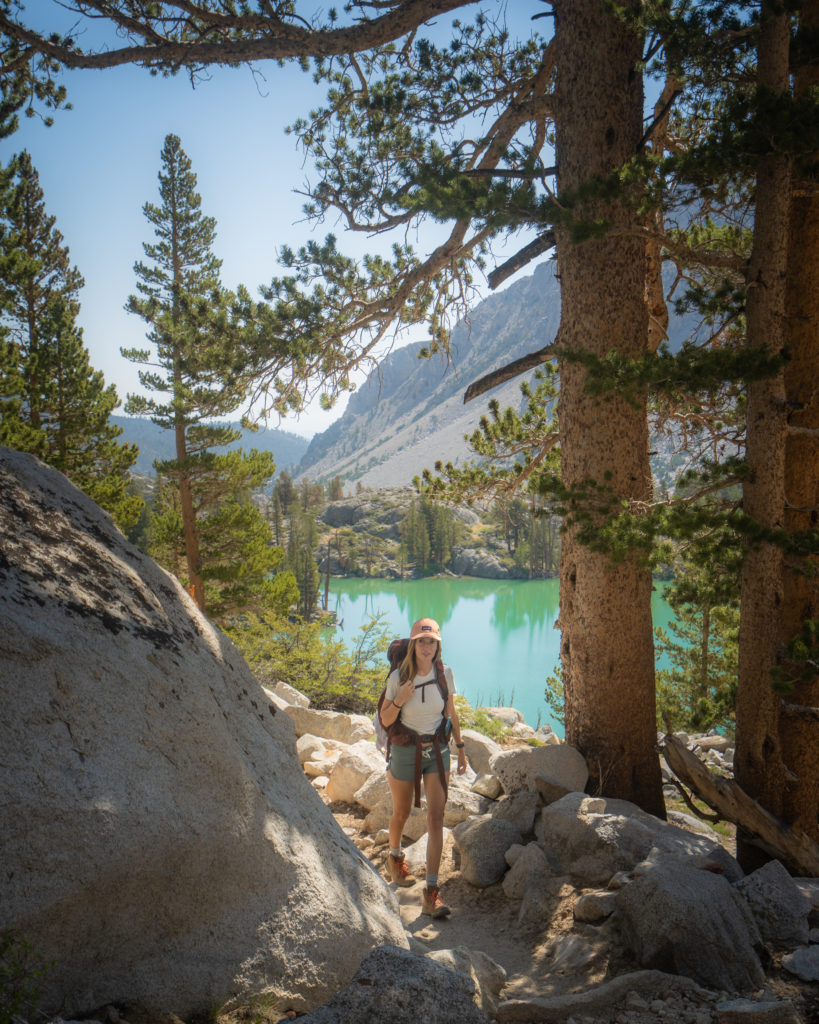
The Hike To Big Pine Creek’s Second Lake At A Glance
Type of Hike: Out and back
Distance: Approximately 10 miles round trip
Difficulty: Moderately Strenuous
Total Elevation Gain: Approximately 2,300 feet
Length Of Time: It took us about 2.5 hours to get up to Second Lake and a flat 2 hours to get back down. This included water breaks and short stops to take photos along the trail.
Best Season To Hike: We hiked the trail in mid-June, and the conditions were perfect. That being said, it was also during an unseasonably early heatwave. In general, I’d say July-September would be the safest bet.
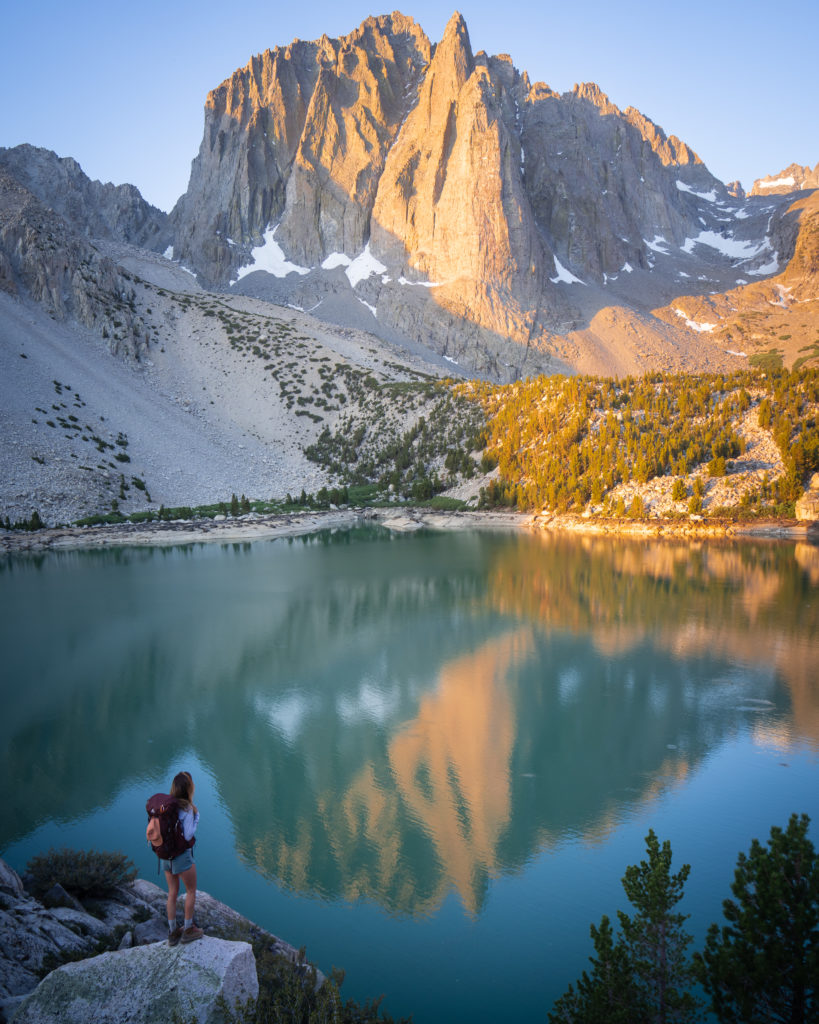
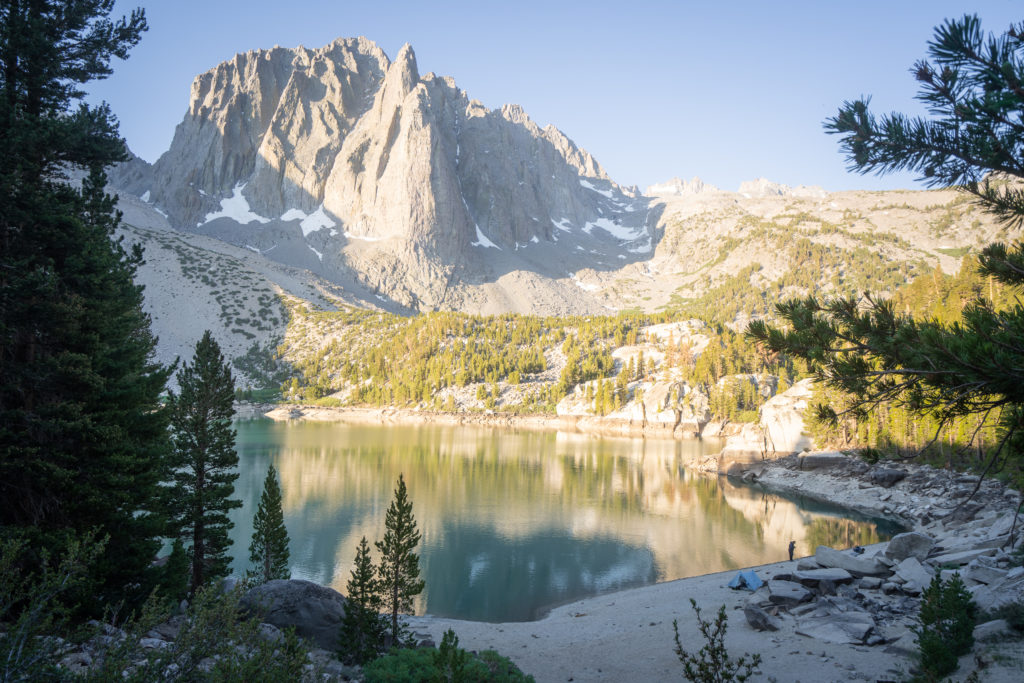
Detailed Trail Description To Big Pine Creek’s Second Lake Hike
We arrived at the day-use parking area around 3:30 am. Despite the heatwave, the night air had a refreshing alpine crisp to it, and I was glad that we had decided to get an early start on the trail. We donned our headlamps and headed up past the service gate next to the Glacier Lodge. The lodge is no longer there, but several traditional cabins that can be rented out remain. You will hike a short distance with the cabins to your right and the river on your left before you hit the first of multiple forks in the trail. Luckily they are all well signed!
Take the trail to the North Fork of Big Pine Creek. You’ll immediately head up a series of switchbacks. If you miss the fork and accidentally head up the South Fork, don’t worry! You will eventually meet back up with the North Fork Trail; you’ll just hike a little farther. That being said, this portion of the South Fork Trail is less steep than the North Fork, so if you prefer distance over incline, South Fork is a good alternative.
Shortly after you reach the top of the switchbacks, at around 0.7 miles (according to my Apple Watch), you will again need to choose between the North and South Forks. If you missed the first turnoff, this is where you will be able to rejoin the North Fork. Quickly after this, you will hit yet another junction.
This time the choice is between an upper and lower North Fork.
We weren’t sure which one we were supposed to take, so we opted for the lower trail! It appeared to match the route on my AllTrails app, plus it got us to our final destination. But I’m guessing that the upper trail would have worked just as well.
It’s relatively easy cruising from here on out. The trail has a constant uphill grade, but it never felt like a slog. I still think that the switchbacks at the beginning were probably the most demanding part of the hike, and I barely noticed it at the time because, well. . . it was dark, and we had fresh legs at the time.
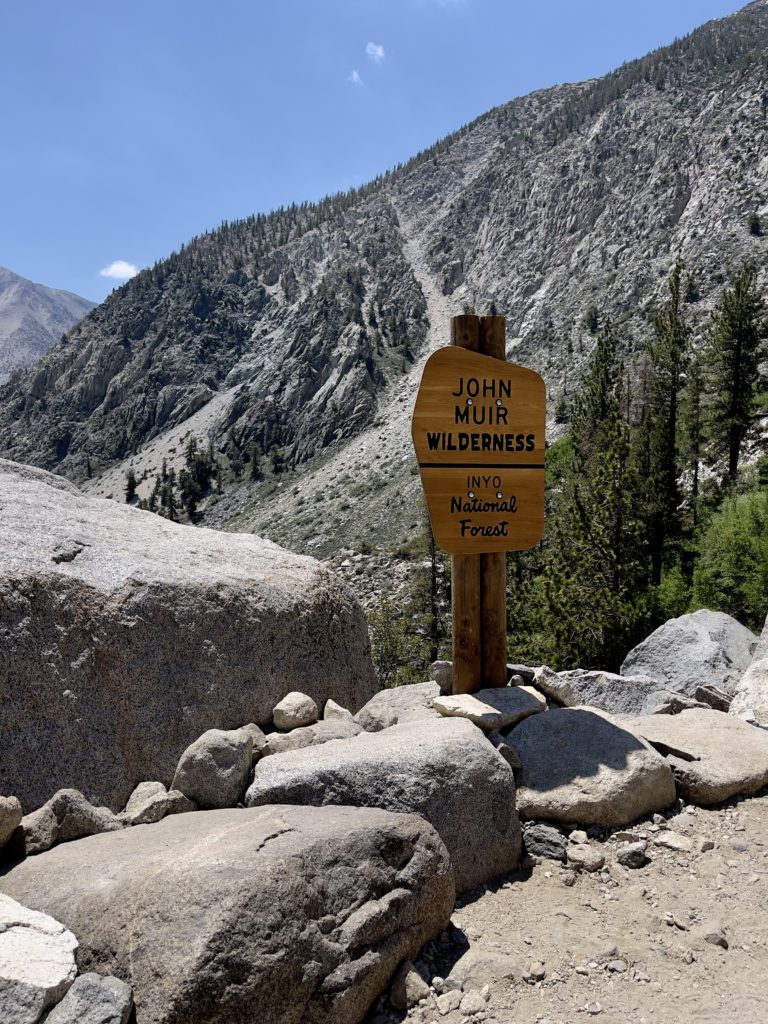
Around the 2 mile mark, a large sign will announce that you are entering the John Muir Wilderness Inyo National Forest. From here on out, there’s easy access to water, shade, and extensive views. And then there’s the Big Pine Creek Wilderness Ranger Camp!
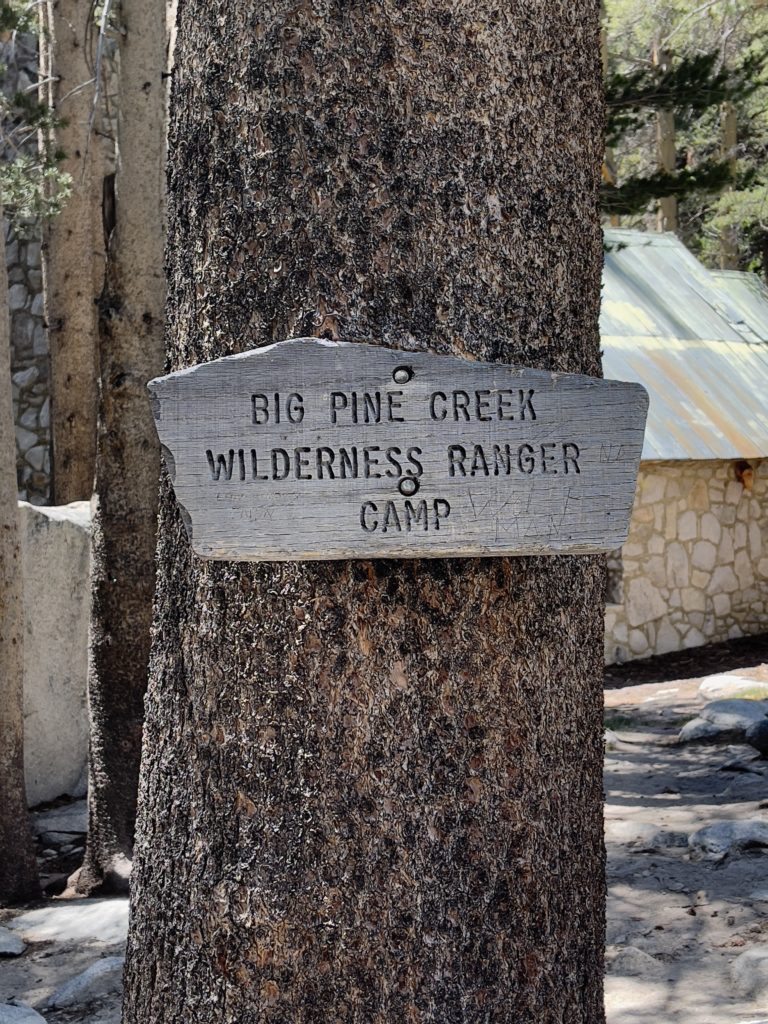
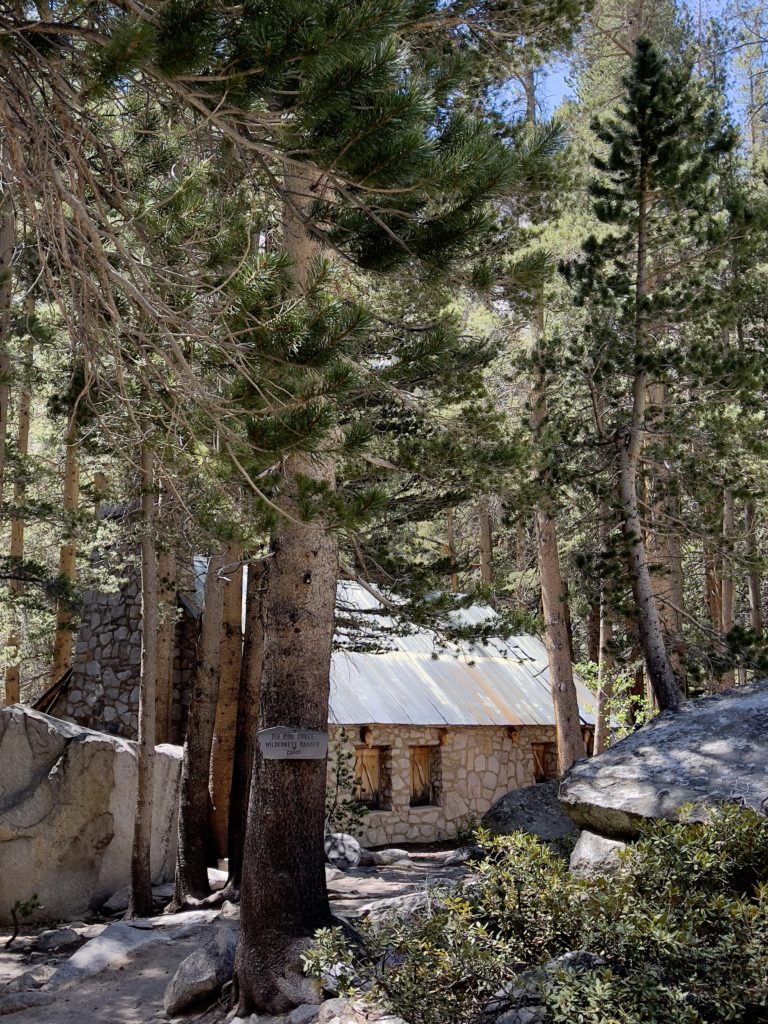
Apparently, the charming service cabin was once a summer home of one Lon Chaney, Sr, one of Hollywood’s most famous character actors. It was designed by Paul Revere Williams, who was the first African American to be granted a fellowship in the American Institute of Architects. The porch makes for a nice protected spot to enjoy a snack or just take a load off for a few minutes.
You can also refill your water in Big Pine Creek here before continuing your hike. It was still pretty dark when we passed the cabin on our way up, but it made for a lovely stop on our way down. Once you pass the Wilderness Ranger Camp, the trail gets a little steeper.
But it’s worth it for the views that are just up the trail!
About one mile up the trail from the cabin, you will get your first views of Temple Crag peeking out from behind the surrounding landscape. This iconic peak will serve as your directional beacon for the rest of the hike. Not that you need it, because well, there’s a trail!
Before you know it, you’ll hit another sign, this one directing you to Lakes 1-3 and a small water crossing. You’re basically there! When we left at 3:30, we had anticipated the hike taking much longer, and given that it was literally summer solstice the day we hiked the North Fork of Big Pine Creek, we didn’t expect to make it to the lakes for sunrise. But when we saw Temple Crag start to glow pink with the rising sun, the race was on! Quin took off up the trail, and I picked up my pace as well. I made it to First Lake as the mountain peaks exploded with alpenglow.
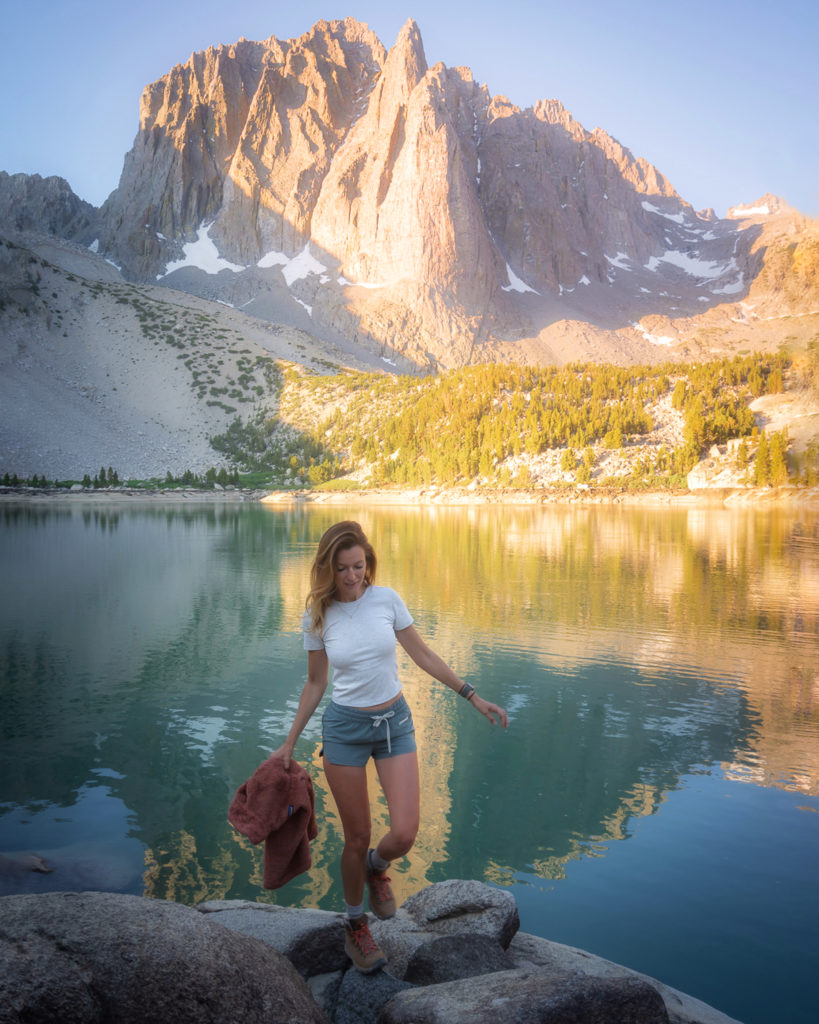
A few minutes later, I found Quin standing on a rock ledge overlooking the view from the photograph that had stuck with me all these years. Ironically, the distance between First and Second Lake was so short that I didn’t realize I was looking at Second Lake.
After we ran around photographing what remained of the morning glow, I turned to Quin and asked him if we should continue up to Second Lake? To which he slowly shook his head and informed me that we were already there!
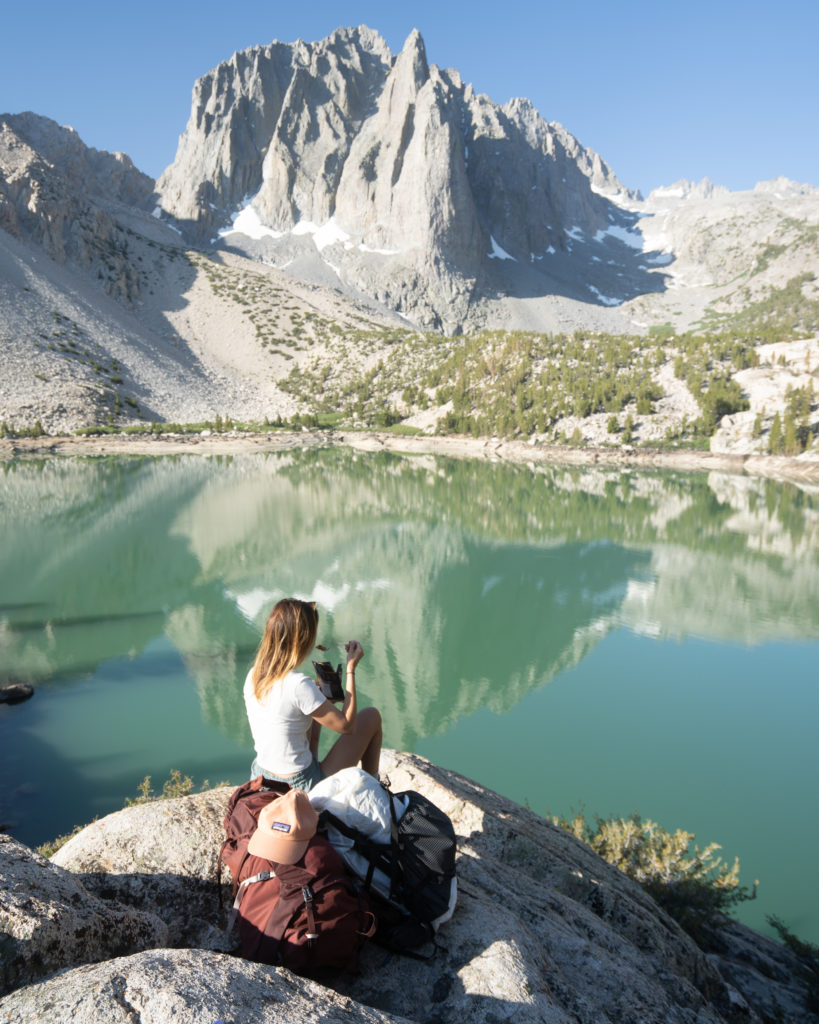
Getting Permits To Camp Overnight At Big Pine Lakes
You don’t need permits to day hike to Big Pine Lakes. You can just go!
There are few other places in the Sierra Mountains where such spectacular scenery is so easily accessible. For that reason, Big Pine Lakes is considered one of the best day hikes in California. But, if I had it all over to do again, I would definitely turn this into a backpacking trip. It’s such a beautiful area, and there’s so much to explore that setting up camp for a couple of days would be ideal.
A wilderness permit is required year-round for overnight trips into the John Muir Wilderness. Because the Big Pine North Fork Trail is located in the Inyo National Forest portion of the wilderness, you reserve your permits online at recreation.gov.
On their home page, search “Inyo National Forest – Wilderness Permits” to explore available permits.
The number of people allowed to begin overnight trips is limited by quotas. The quota is the number of people that can start at the listed location each day. Therefore, your permit is only valid to begin on the specific entry date and location reserved. For the Big Pine North Fork Trail, the daily quota for overnight trips is 25 people. 15 of the available overnight permits can be booked 6 months in advance. The other 10 are set aside for walk-up reservations. Usually, walk-up reservations become available after 11 am the day before your desired start date.
HOWEVER, this year (2021), because of lingering COVID restrictions, walk-up reservations must be reserved online at recreatoin.gov. Walk-up permits are released 2 weeks before the trip, at 7 am Pacific time.
So if you are like me, and you literally have never planned something 6 months in advance in your life, then you will want to look on the recreation.gov website at 7 am Pacific Time on the same day of the week, two weeks before your desired trip entry date. The reservation system is live, so even if you miss out on permits 2 weeks in advance, I’d keep checking each day to see if there are any last-minute cancelations you could snag.
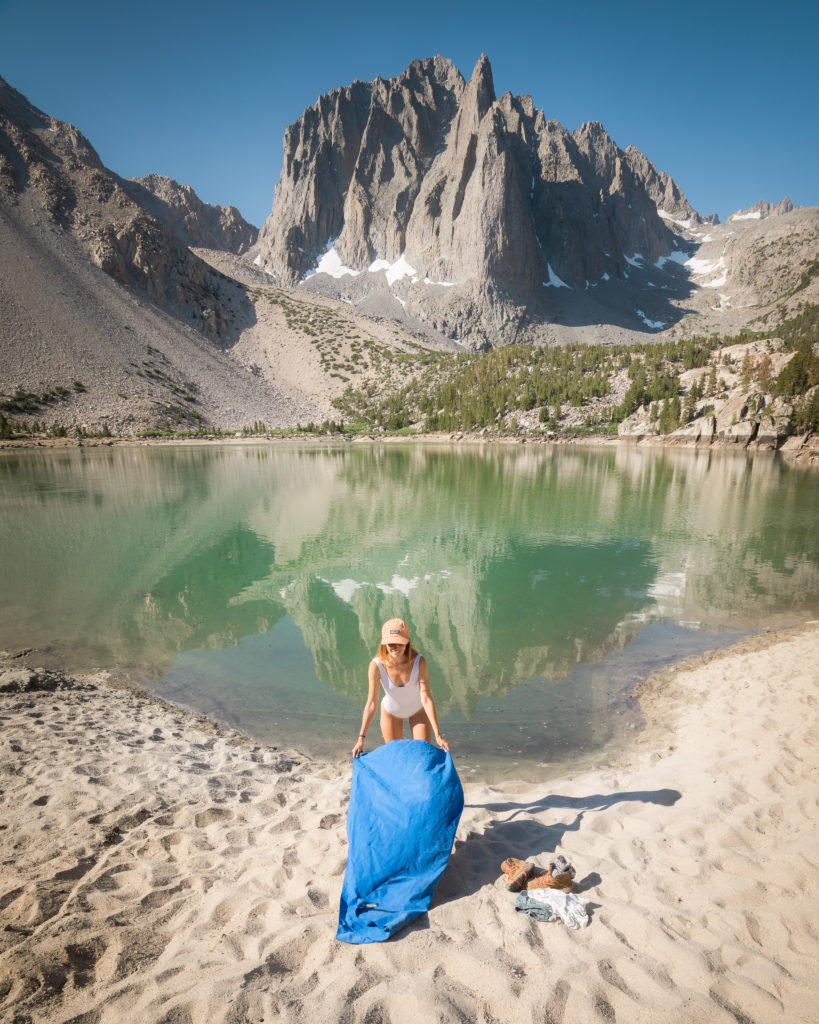
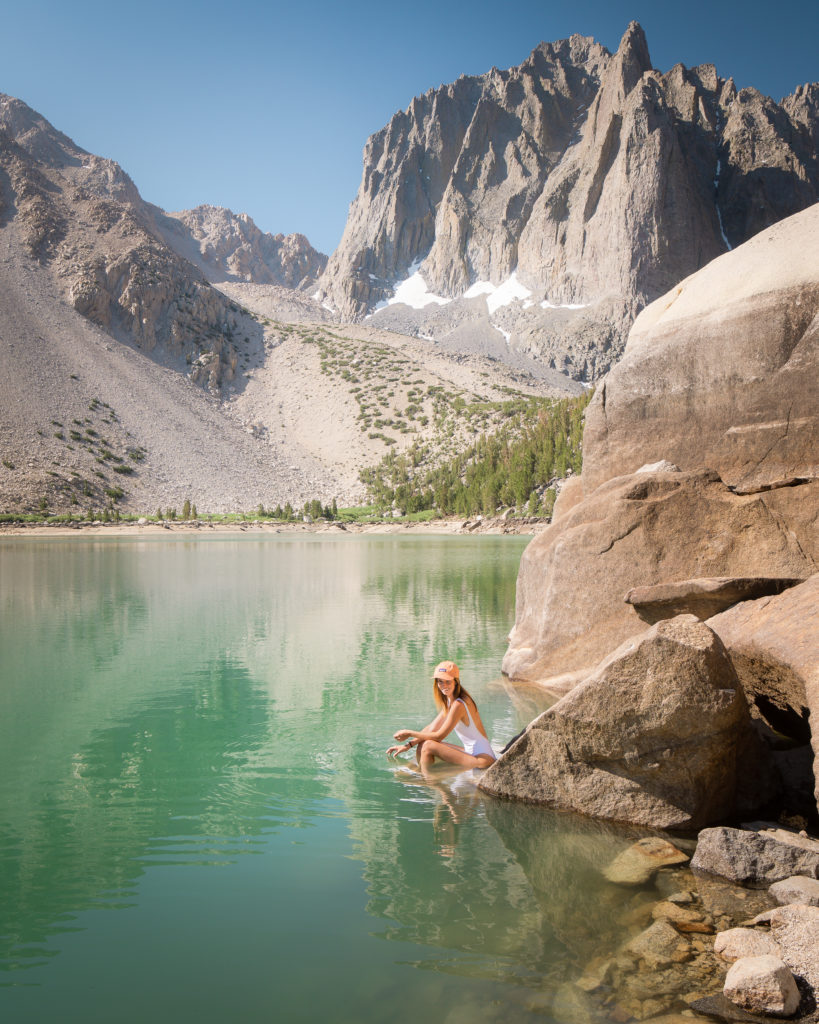
3 Things To Keep In Mind Before you Reserve a Permit To Camp At Big Pine Lakes
- Only the person designated when the reservation is made can receive or use the permit. Reservations cannot be sold or transferred. Leader or alternate leader names cannot be changed or added.
- Your reservation will be canceled as a “No Show,” and your space may go to other groups unless you arrange to receive the permit before 10 am on the entry date.
- A $6.00 non-refundable reservation fee is required for each permit reservation. In addition, there is a $5 recreation fee charged per person using the Inyo National Forest trails. (All prices based on 2021 rates).
Getting To The Big Pine Creek North Fork Trail Head
Big Pine Lakes is located in the John Muir Wilderness, Inyo County, 10 miles west of Big Pine and 15 miles south of Bishop.
From the cute little town of Big Pine, CA, on US Highway 395, you’ll turn west onto Crocker Street. Eventually, the road turns into Glacier Lodge Road, and you will pass the overnight parking area on your right. From there it’s a little under a mile to the day-use lot and the beginning of your hike! The trailhead is well signed, so you will know pretty quickly whether you are in the right place or not.
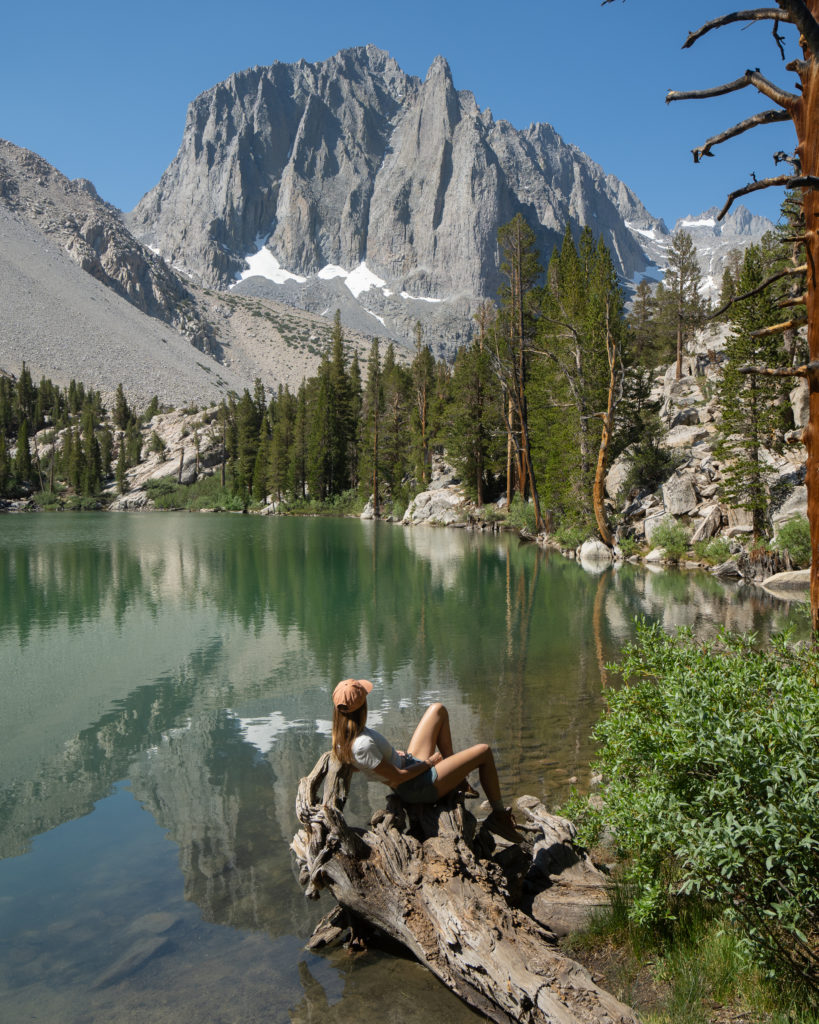
Practice Leave No Trace Principles On Your Hike To Second Lake
Leave No Trace is built on seven core principles that outline the best available minimum impact guidance for enjoying the outdoors responsibly. In other words, Leave No Trace provides a framework for enjoying the outdoors while leaving the smallest possible footprint. The goal is to respect the places we play and leave a location in the same state (or better) than you found it. The next people to visit shouldn’t be able to tell you were there!
The Leave No Trace principles include:
- Plan Ahead and Prepare
- Travel and Camp on Durable Surfaces (aka stay on the trail)
- Dispose of Waste Properly (use the provided pit toilets)
- Leave What You Find
- Minimize Campfire Impacts (There are no campfires permitted around Big Pine Lakes)
- Respect Wildlife
- Be Considerate of Other Visitors
I encourage you to visit The Leave No Trace Center for Outdoor Ethics for more detail regarding these principles, as well as information on how you can protect the beautiful places we all love so much. © 1999 by the Leave No Trace Center for Outdoor Ethics: www.LNT.org.
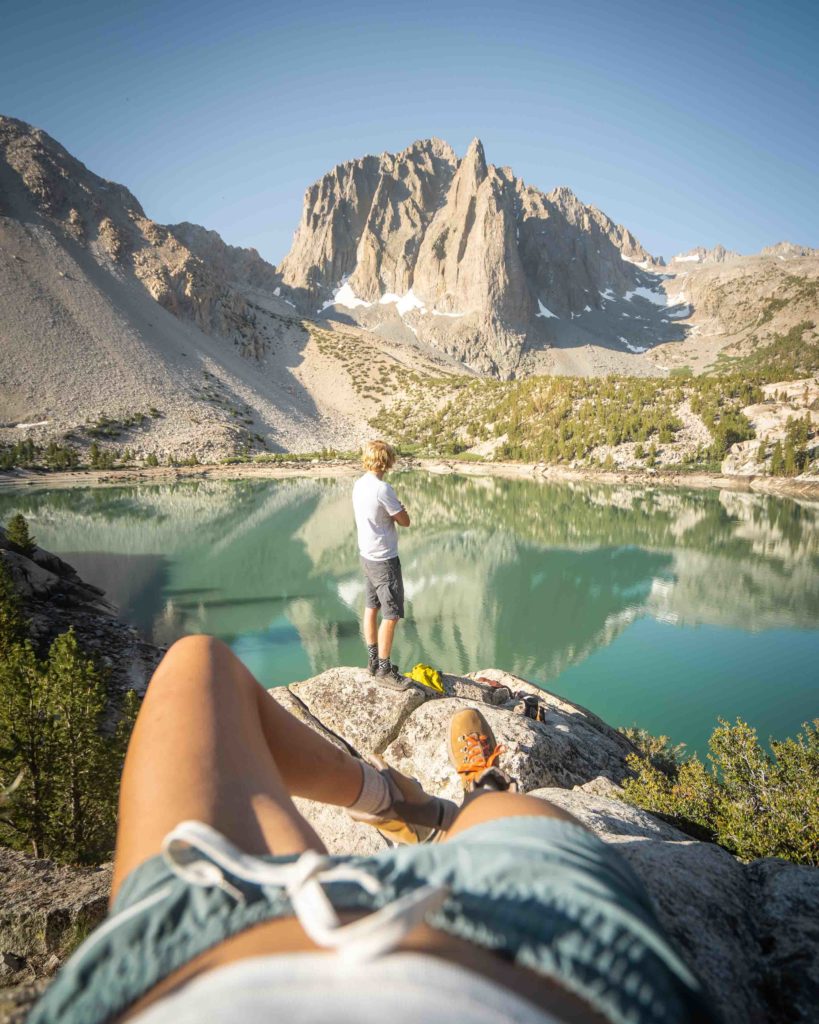
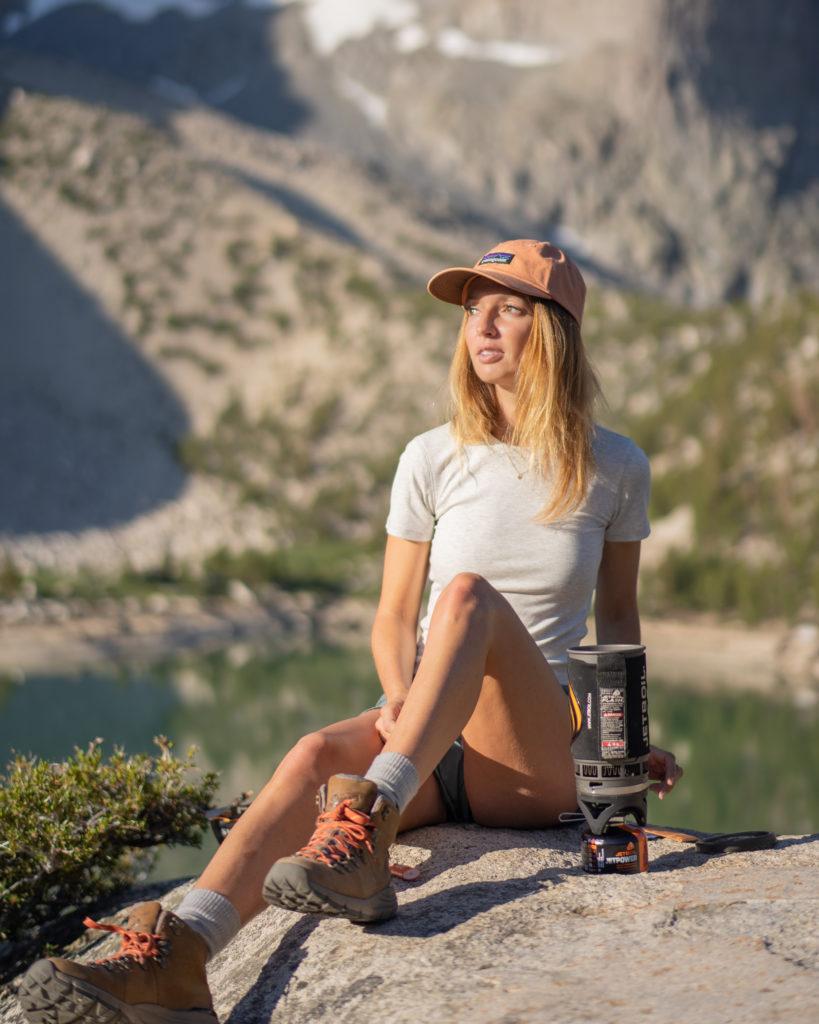
What to Pack On A Hike To Big Pine Lakes
On the day we hiked to Second Lake, the temperature ranged from about 50° F to 90°. Even though we had nearly perfect conditions, I still used almost all my layers at one point or another. The weather can change quickly and dramatically in The Sierra, and it’s essential to be prepared for anything Mother Nature feels like throwing your way.
Storage
BACKPACK: Osprey Tempest 22 Pack for women and the Osprey Talon 22 for men. My go to when I need a little more space without sacrificing comfort. It carries beautifully, cinches in close, and has enough pockets to keep everything organized without feeling fussy.
RUNNING VEST: I’ve started using a running vest for hikes when I don’t need much gear because it keeps everything light, close, and easy to grab without taking off my pack. The Salomon Active Skin 8 has become my favorite because it fits like a hug, carries water up front, and has just enough space for the basics without ever feeling bulky.
Clothing
SUN SHIRT – The Crater Lake Hoody is my favorite sun shirt because it’s so light and soft it almost feels like air. It offers full UPF 50+ protection for long days in exposed terrain, so I don’t have to carry buckets of sunscreen.
SHORTS – You don’t need to reinvent the wheel here. Whatever works for you! I’ve been really enjoying the Lululemon Pace Rival High Rise Shorts and Outdoor Voices Warmup 5” Shorts.
HIKING PANTS – To be honest I’ve never been a big hiking pants person. I generally just wear one of my favorite pairs of leggings, because that’s what I’m most comfortable in. But this summer I picked up a pair of REI Trailmade Pants and they were nice! The Trailmade Pants are affordable, durable, and surprisingly versatile for hiking and backpacking. And I have to admit it was nice to have a pair of pants that were a bit more airy than leggings.
INSULATED LAYER (Down Jacket) – The Patagonia Fitz Roy Down Jacket is a cold-weather essential I bring on alpine or winter trips when serious warmth is non-negotiable. It’s stuffed with premium 800-fill down, so it’s incredibly warm for its weight. I’d recommend sizing down. But when I’m really trying to go lighter without sacrificing warmth it’s hard to beat Rab’s Mythic G Down Jacket. Best to pick this one up on sale if you can!
RAIN JACKET: The Rab Phantom Jacket is an ultralight, fully waterproof shell that packs down small and disappears in your bag until you need it. I’m a fair weather hiker, but in the mountains weather can change fast, so it’s great to have rain protection that doesn’t weigh me down.
Shoes
TRAIL RUNNERS – The Hoka Challenger Trail Running Shoes is my go-to shoe for warm weather hiking. I prefer trail runners over hiking boots because they’re lighter, more breathable, and dry quickly. I’ve worn mine on everything from day hikes to multi-day trips like the John Muir Trail, and they’ve been incredibly durable for how lightweight they are.
BOOTS – The Danner Inquire Chukka Mid is my favorite hiking boot! I wear it when I want more ankle support than a trail runner but still need something light and flexible. Or when I just want to look cute!
Hiking Gear Essentials
Whether you’re going on a short day hike or camping deep in the backcountry, you should always carry The TEN ESSENTIALS for outdoor adventure with you. They might just save your life!
WATER PURIFIER – The Katadyn BeFree is my favorite filter for speed and simplicity. It’s ultralight, easy to squeeze, and perfect for quickly filling bottles on the go.
The Grayl Water Filter is much heavier but unbeatable for international travel or areas with questionable water sources because it removes viruses as well as bacteria and protozoa. It works like a French press—fill, press, and drink—with no need for extra bottles or gear.
HEADLAMP – Nitecore NU25 400 Lumen Rechargeable Headlamp
GPS COMMUNICATION – I carry the Garmin InReach Messenger Plus for peace of mind on backcountry trips — it lets me send texts and share my location even when there’s no service. The battery lasts for days, and it’s a small, reliable way to stay connected and safe when I’m off the grid. AND you can send photos and voice notes! Watch the video I made about the Garmin Messenger Plus! It’s one of my favorites.
** Garmin also recently released the new inReach Mini 3 with photo and voice messaging capabilities. So you’ve got lots of good options!
SMART WATCH – I’ve been wearing the Garmin Fenix Watch to track my activity for years, and the JMT was no exception.
TREKKING POLES – Durston Iceline Trekking Poles. I just picked up the Durston Iceline Trekking Poles because I wanted something ultralight but sturdy to take pressure off my knees on big hikes. They’re incredibly light (under 10 oz per pair) and I couldn’t be happier with them.
MULTI-TOOL – Swiss Army Classic Knife
FIRST AID – Band-Aids, Leukotape, pain relievers, and antibacterial cream.
POWER BANK – Nitecore Power Bank
Camera
At some point, you’re going to want to take a photo – even if it’s just on your phone! Given the hike’s difficulty, Quin and I tried to minimize the heavy camera gear we packed. We brought the Sony a7rIII with a 16-35mm f4 lens and the Sony RX100 VI.
SONY RX100 VII – The Sony RX100 VII is my favorite compact camera for backpacking because it’s small enough to slip in a pocket but still delivers professional-quality photos. The 24–200mm zoom range makes it incredibly versatile, and it’s the perfect option when I don’t want to carry one of my heavier cameras but still care about image quality.
Bug Spray:
Mosquitos weren’t an issue for us, but I hear they can get pretty bad in this area. I’d pack some just in case!
Check out my COMPLETE CAMERA GEAR GUIDE for a list of the gear we use on our travels!
If you’re looking for more outdoor gear and apparel, check out my Complete Hiking and Camping Gear Guide.
Please note that this blog post includes affiliate links. If you do choose to purchase something, I may earn a small commission – at no additional cost to you. As always, all ideas and opinions expressed in this post are entirely my own.
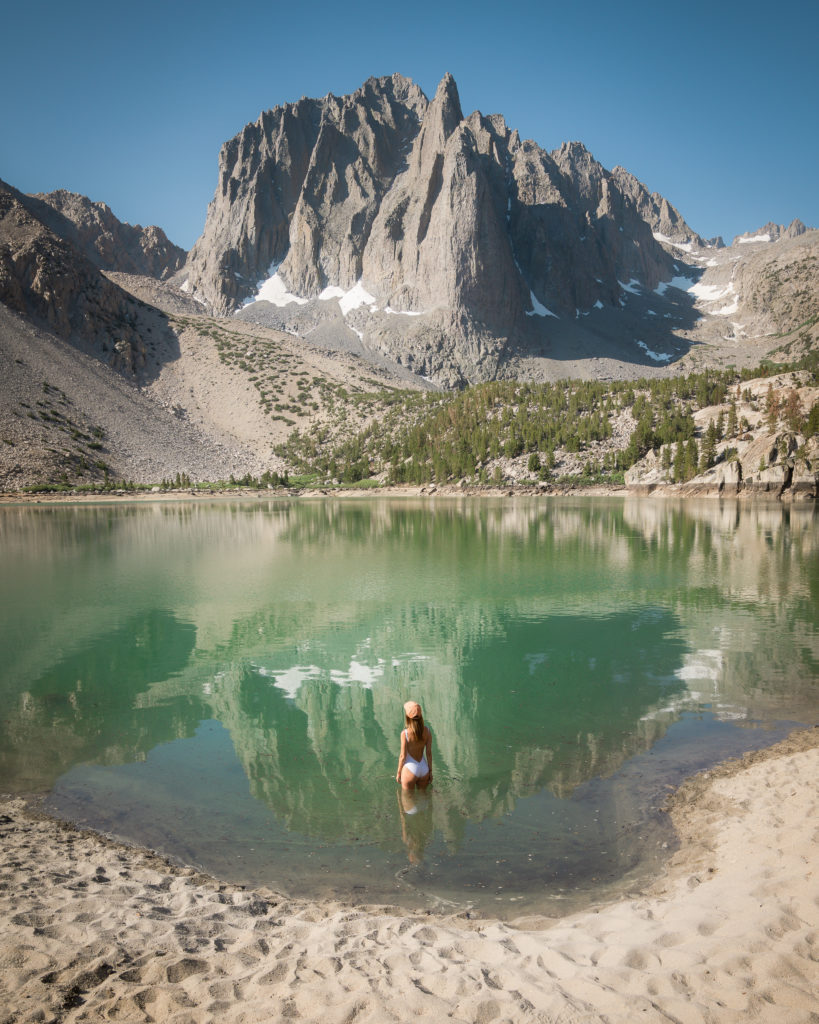
I hope this post can help you plan your own hike up to Second Lake, and maybe even beyond! Questions? Did I miss anything? Leave a comment, and I’ll see you on the trail!
Thank you so much for your support! Happy Adventuring. – jess
Photos In Collaboration With Quin Schrock
Related Posts You Might Enjoy!
Complete Guide To Backpacking The Mineral King Loop In Sequoia
Thru-Hike The Enchantments In One Day: Everything You Need To Know
How & Where To Backcountry Camp In Yosemite National Park
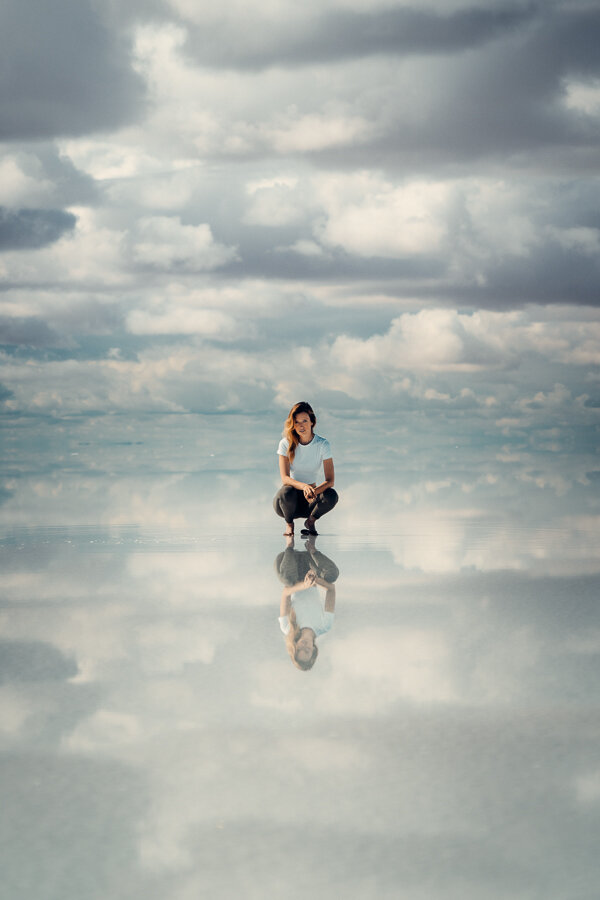
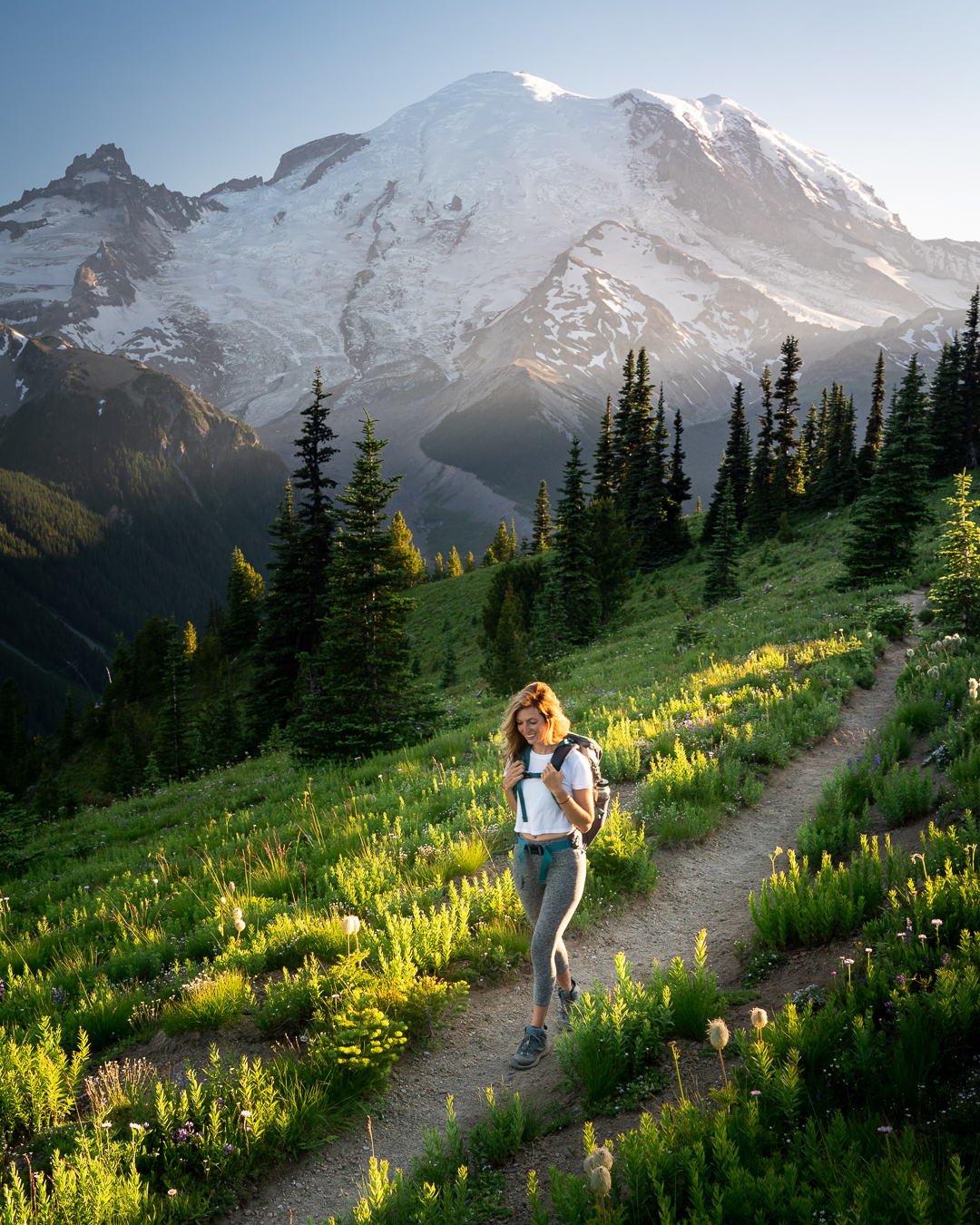
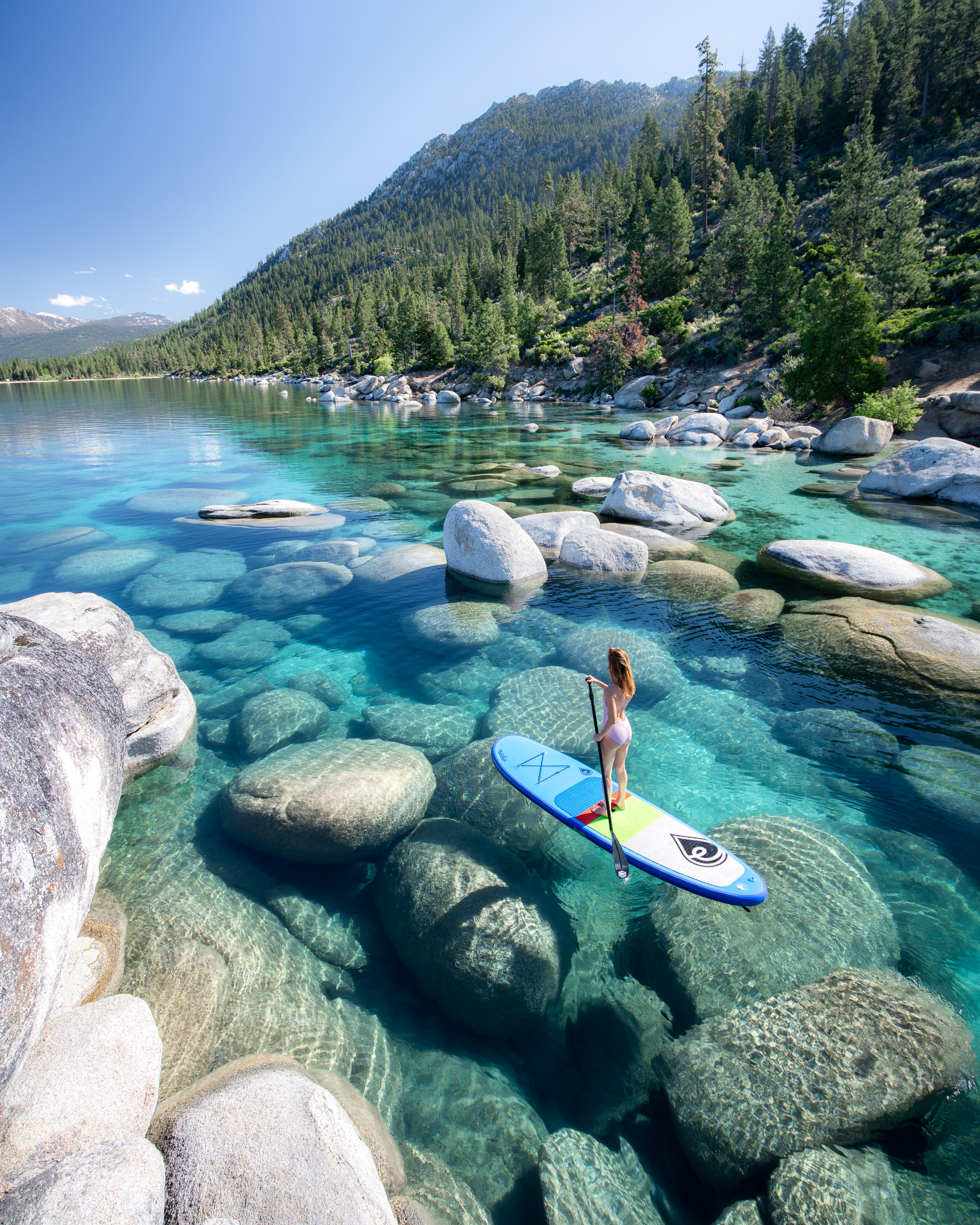
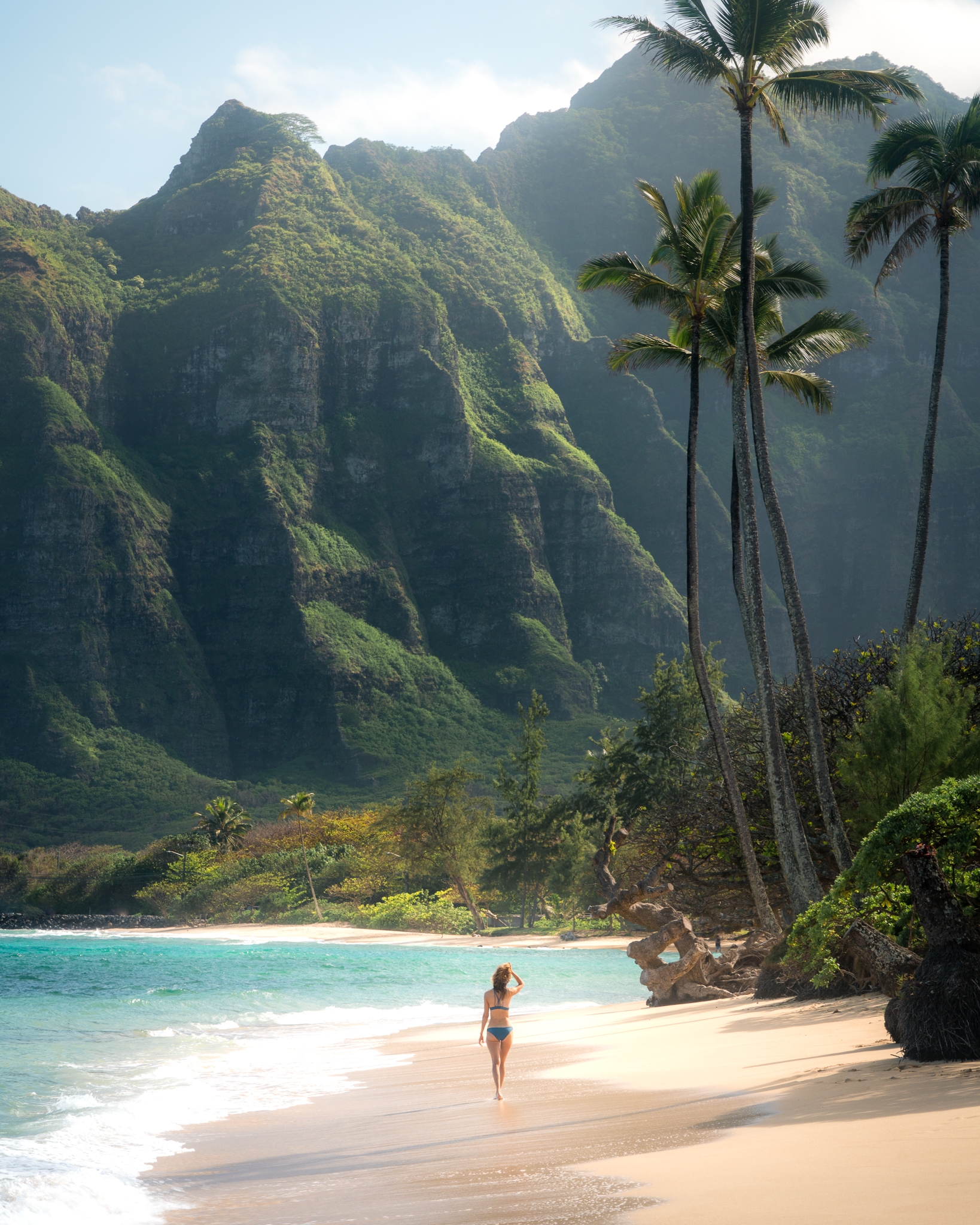
This looks like a great hike, adding it to my wish list. Congratulations on the new website, looking forward to your new content here!
Thanks so much Chad! Really appreciate the comment, and I hope you are able to do some hiking in the Big Pine area soon. It’s stunning up there!
Hello-thank you for writing this well informed blog. It gives me a better idea on what to expect. Do you think not super active people can do this trail as well?
I’m glad you liked the post! I think it would be a challenge for someone who is not very active, but doable.